BRYCE ON SOCIETY
- What shaped the Baby Boomers?
(Click for
AUDIO VERSION)
To use this segment in a Radio broadcast or Podcast, send TIM a request.
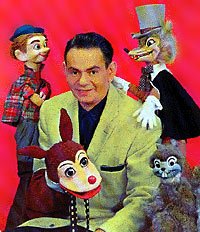
Now for a bit of nostalgia. I was recently up on a Philadelphia web site doing some research when I stumbled upon an old kiddie show I watched back in the 1950's. I couldn't have been more than three years old at the time, but memories of the show came flooding back to me. I happened to tell my wife about the show, including its plot and puppet characters, and she looked at me like I had lost my mind. Before I reveal the name of the show, which only someone from the Philadelphia/New Jersey/Delaware area will remember, I prepared a list of the children television shows from years ago and contemplated their impact on my generation.
As a note, since I primarily grew up in the Northeast and Midwest, some of these titles will not be recognizable to everybody. Maybe you'll remember some of these programs. If not, it will give you some insight into how the Baby Boomers think.
Alvin and the Chipmunks - was a cartoon series originally produced in the late 1950's/early 1960's. The premise involved a trio of singing chipmunks; Simon, the intellectual; Theodore, the chubby one, and; Alvin, the mischievous one. Their manager was David Seville who produced their music and tried to keep them out of trouble. The group made some songs that reached the pop culture, but it was the cartoon series that perpetuated them for many years. Their TV show included a series of shorts featuring
Clyde Crashcup, an imaginative inventor, and his shy assistant Leonardo, who could only be heard whispering to Clyde. In the 1980's, following the death of their creator, Ross Bagdasarian, Sr. (the voice of Dave Seville), the group was updated and re-released to the public.
Beany and Cecil - the creation of Bob Clampett, it originally started out as a puppet show but became a popular animated series in the early 1960's. The show featured "Beany," a young boy, and "Cecil" the Sea-Sick Sea Serpent. The two would go on adventures with Cecil making wise-cracks and puns. "Dishonest John" was the bad guy.
The Sandy Becker Show - Becker was one of a handful of pioneers of children's television on WNEW-TV in New York (Channel 5, now WNYW); others included Soupy Sales and Sonny Fox (see below). Sandy's show featured puppets and characters with funny voices. The show was just plain fun and entertaining for kids after school. His most bizarre character was
"Hambone."
Bozo the Clown - was both a cartoon and a franchise featuring a circus clown. He appeared on local channels throughout the country with Chicago's WGN version becoming the most popular. Bozo was so popular, to attend the show Chicago parents had to order tickets one year in advance.
Captain Kangaroo - ran for 38 seasons (from 1955-1984) and featured Bob Keeshan as the Captain, who was supported by a cast of characters like Mr. Green Jeans, guests, and puppet characters such as Mr. Moose and Mr. Bunny Rabbit.The Captain may have been somewhat sedate, but Keeshan was interested in teaching moral values while entertaining children.
Chatter - Chatter's World was produced by WBKB Channel 7 in Chicago as a series of black and white shorts. It starred a talking chimpanzee that would get in and out of trouble. The voice of Chatter was comically unique.
Circus Boy - kids gravitated to this 30 minute black and white show as it combined a circus with the old West. It featured "Corky" in the title role, and played by Micky Dolenz (later of "The Monkees"). Corky's big responsibility was to care for Bimbo, a baby elephant. What kid wouldn't want to ride or take care of a baby elephant?
Cisco Kid - graduated from radio to television in the 1950's. Unlike most Westerns at the time, which were shot in black and white, the Cisco Kid was one of the first to be shot in color. The show starred Duncan Renaldo as Cisco, and Leo Carrillo as the fun-loving Pancho.
Clutch Cargo - was an adventure cartoon series featuring limited animation. To compensate, filmmakers superimposed the lips of the actors to make it seem more realistic. Clutch was assisted by his ward "Spinner" and his dog "Paddlefoot."
Crusader Rabbit - was the first animated series produced specifically for television. Although the stories were interesting, the animation was primitive, particularly when you compare it to Disney or Warner Brothers.
Walt Disney Presents - early Sunday nights were Disney nights and hosted by Walt. The show featured cartoons, nature films, and adventure series, such as
"Davy Crockett" which became incredibly popular.
Diver Dan - was an adventure series of filmed shorts, in black and white, featuring a sea diver in an old-fashioned diving suit who would talk to passing fish. The show was filmed through an aquarium to give it the illusion of a water effect. The fish were actually marionettes. The antagonists were Baron Barracuda and Trigger Fish who were always trying to undermine Diver Dan. Miss Minerva, the beautiful mermaid queen, also talked to the fish but shyly avoided Diver Dan.
Fireball XL5 - was a space ship which was a part of the World Space Patrol. It was filmed in
"Supermarionation" (puppetry) and originated in the UK. The futuristic look to the show made it popular, particularly at a time in the 1960's when we were engaged in the Space Race.
Hanna-Barbera - William Hanna and Joseph Barbera were the creators of MGM's
"Tom and Jerry" cartoons, and became the most prolific producers of animated cartoons in the 1950's and 1960's, including:
"Huckleberry Hound," "Quick Draw McGraw," "Yogi Bear," "The Jetsons," "Top Cat," and many others.
"The Flintstones" became their most popular series and the first to play during prime time. The series itself was a takeoff of Jackie Gleason's
"The Honeymooners." "Jonny Quest" was particularly popular with young boys as it featured the adventures of Jonny and his father, scientist Dr. Quest. He was accompanied by Race Bannon, Hadji, and Jonny's dog, Bandit, for comic relief. The animation was more lifelike than the other Hanna-Barbera series.
Hot Dog - was an imaginative show created by Frank Buxton who explained to children how things were made, including hot dogs, hence the show's name. To add levity to the program, Buxton would interview Jonathan Winters, Woody Allen and Jo Anne Worley who would offer bizarre answers for how things were created, thereby becoming a favorite among adults as well as children.
Howdy Doody - was a marionette dressed in Cowboy garb. The show was hosted by Buffalo Bob who was dressed in buckskin and quickly became a favorite of the "Peanut Gallery," a set of bleachers for kids attending the show. There were other characters used for comedy relief, such as Clarabell the Clown, who would honk horns and squirt people with seltzer, and Chief Thunderthud who coined the greeting, "Kowabonga!"
Jungle Jim - was played by an older Johnny Weismuller who had retired as Tarzan. Jungle Jim was a black and white syndicated show, featuring Weismuller as a hunter and explorer. He was accompanied by his teenage son Skipper, and supported by Haseem, an Indian servant. There was also Tamba, the chimpanzee. Although the show was theoretically set in Africa, Jungle Jim also visited Asia and other places. For kids, "Jungle Jim" was the next best thing to
"Tarzan."
Just For Fun - was hosted by Sonny Fox on New York's WNEW-TV (Channel 5). Although Fox was perhaps better known for "Wonderama" (see below) which ran on Sunday mornings, "Just for Fun" was on Saturday mornings and featured contests between teams of kids. The winners would inevitably win more games and toys than they could carry.
Kukla, Fran and Ollie - was created by Burr Tillstrom and originated out of Chicago. It featured two puppets: Kukla, a clown and, Ollie, a one toothed dragon. Fran Allison sat in front of the two and controlled the dialog. The humorwas gentle, but very entertaining.
Lassie - a beautiful dog that appeared at times to be smarter than her owners. Kids loved this animal, particularly at the end of the show when she would offer her paw to the audience. The show was so popular on Sunday nights that it competed with Disney.
The Shari Lewis Show - Lewis was a puppeteer and actress. Her principal characters were Lamb Chop, Hush Puppy and Charlie Horse, all possessing endearing personalities. Lewis had an instinctive way to make kids laugh while teaching them positive lessons.
The Lone Ranger - the masked man of the plains graduated from radio to the television screen in the early 1950's. Clayton Moore played the quintessential ranger, as did Jay Silverheels as Tonto. The two were positive role models as they always fought for truth and justice.
The Chuck McCann Show - the noted comedian began his career in New York on WPIX where he developed nutty characters and skits for children.
Mickey Mouse Club - a Disney project started in the mid-1950's and featuring Jimmie Dodd as host and the "Mousketeers" ensemble who would sing and dance. Actress Annette Funicello got her start on the show as did many others over the years. The show would also include serials, such as
"The Hardy Boys," featuring Tim Considine and Tommy Kirk, and
"Spin and Marty," starring Tim Considine and David Stollery.
Mister Rogers' Neighborhood - featured Fred Rogers and was considered the PBS version of Captain Kangaroo. Rogers' character was very mild mannered. So much so, comedians such as Johnny Carson and Saturday Night Live would make parodies of him.
Muppets - long before "sesame Street," Jim Henson's Muppets gained notoriety on the "Jimmy Dean Show" in the late 1950's (Yep, the singer who sold breakfast sausages). In particular, Rowlf the Dog became a favorite with adult audiences.
My Friend Flicka - first created as a book, then produced into a movie, the TV version was set in a fictional ranch in Cheyenne, Wyoming and featured Ken McLaughlin, the son of a rancher, and his horse Flicka.
Popeye the Sailor - was a newspaper comic strip and an animated series which got it start in the 1930's. An updated version of Popeye was produced in the 1950's with the same characters, his girlfriend Olive Oyl and rival Bluto. His secret to his strength was a can of spinach. By doing so, he increased the sale of spinach significantly.
Rin Tin Tin, The Adventures of - Rin Tin Tin had long been a movie star. For television though, the setting was the Wild West where the famed German Shepherd accompanied Rusty, a boy being raised by the soldiers on a US Cavalry post known as Fort Apache.
Rocky and Bullwinkle - was a cartoon series produced by Jay Ward. The show starred Rocket J. Squirrel, and Bullwinkle J. Moose who would go from one adventure to another, usually fighting Boris Badenov and Natasha Fatale. The series also featured cartoons entitled "Fractured Fairy Tales," and "Sherman and Peabody," featuring a brilliant talking dog. The cartoons were loaded with puns and wisecracks that would often go over the heads of children, but quickly picked up by adults.
Romper Room - was a long running syndicated show for children. Like Bozo, Romper Room was franchised to local media outlets throughout the country. Modeled after a kindergarten, the hostess played the roll of teacher and would talk to the students on the set as well as those in the television audience. The kids loved her "Magic Mirror" where she would extend greetings to children who mailed in their names. The show taught manners, the Pledge of Allegiance, and offered a Romper Room prayer to God.
The Roy Rogers Show - was a thirty minute black and white show featuring the King of the Cowboys. Rogers was a beloved character by children everywhere. He teamed up with his wife, Dale Evans, his sidekick Pat Brady, who drove a jeep named Nellybelle. There was also Roger's Palomino named Trigger, and his German Shepherd named Bullet. Visiting Roger's ranch was a dream for many kids. Roy and Dale would end the show by singing,
"Happy Trails."
Sergeant Preston of the Yukon - like the Lone Ranger, Sergeant Preston began on radio and graduated to TV. The show told of Preston's exploits as a member of the Royal Canadian Mounted Police (RCMP). His trusted dog was Yukon King, and Rex, his horse. And they always got their man.
Sky King -
"America's favorite flying cowboy" was another 30 minute black and white series. King was based in Arizona and chased bad guys or performed search and rescues. He was assisted by his niece, Penny, and Clipper, his nephew. The real star of the show though was "Songbird," a sleek Cessna.
Soupy Sales - was another veteran of WNEW-TV (channel 5). His humor was considered avant-garde for his time and was aimed at both children and adults (the kids missed a lot of his jokes). He was supported by three puppets: Pookie, a small lion; and White Fang and Black Tooth, two large dogs which you never saw on camera except for their paws.
Superman, Adventures of - the late George Reeves played the Man of Steel. In this series, Superman only tackled local hoods and trouble-makers, not villains from other planets. He was a positive roll model for
"Truth, Justice, and the American Way."
Tom Terrific - was an early cartoon designed specifically for television. Like Crusader Rabbit, the animation of Tom Terrific was not very good. Tom though had the unique ability to magically change form to just about any object. He was accompanied by his dog, the "Mighty Manfred."
The Paul Winchell Show - was a noted actor and ventriloquist who was accompanied by two dummies, the wise-cracking Jerry Mahoney and Knucklehead Smiff, a country bumpkin. Like Shari Lewis, Winchell had a unique ability to connect with kids.
Warner Brothers cartoons - Saturday mornings were filled with vintage cartoons from the archives of Warner Bothers, such as Bugs Bunny, Daffy Duck, Roadrunner, Porky Pig, Yosemite Sam, et al. It makes you wonder how we ever lived without Mel Blanc, the voice of all of the characters.
Wonderama- whereas Sonny Fox (WNEW-TV) hosted the "Just for Fun" game show on Saturdays, he hosted "Wonderama" on Sundays which was a more cerebral type of show for kids, and originally aired for three hours. Fox would conduct interviews, discuss news, and exercise. Kids participating on the show would win prizes, but nothing to the degree of "Just for Fun."
There were also a multitude of local children's shows across the country. In Cincinnati alone, there was the "Uncle Al Show," "Larry Smith and his Puppets," and the "Skipper Ryle Show." The local shows may not have been as polished as the national shows, but kids still flocked to them.
In many of the adventure shows listed above, you will notice many of the stars had young sons, wards or some other relative. This was a clever move by the producers as the viewing children would associate themselves with the characters, thereby imagining they were a part of the show.
The hosts in these shows were loved by the kids. Today, grown adults openly confess their admiration to these same people many years later. Before his death in the 1990's, Buffalo Bob Smith (of Howdy Doody fame) would tour college campuses with the marionette where he was met by standing room only audiences. Likewise, June Foray and Bill Scott, the voices of Rocky and Bullwinkle, were also mobbed by college audiences. The bond we formed as children to these pioneers of television is something we do not see anymore as such shows no longer exist.
In terms of teaching, all of these shows promoted the concept of good conquering evil, to accept right over wrong, and the need for doing well in school. In addition to being a moral compass, they filled kids with the imagination to be adventurous, yet becoming responsible for their actions. They also provided role models and taught socialization skills. All of this, combined with some simple silliness and fun, no wonder the kids became hooked on children's television.
Finally, the show I watched as a young lad in the Philadelphia area was
"Bertie the Bunyip" - It was another puppet show created by Lee Dexter, an Australian. Lee described a Bunyip as a mythical Australian animal which was a cross between a bunny, a collie dog and a duck billed platypus. As a three year old, I wasn't really concerned with what a Bunyip was, just the character who seemed to be wise, good hearted, and cared about the safety of his friends. Maybe I did learn something from television after all.
Keep the Faith!
Note: All trademarks both marked and unmarked belong to their respective companies.
Copyright © 2013 by Tim Bryce. All rights reserved.
NEXT UP: ARE YOU ENGAGED IN WORK? - Understanding the difference between "jobs" and "careers."
- It certainly wasn't "transparent," was it?
Listen to Tim on WJTN-AM (News Talk 1240)
"The Town Square" with host John Siggins (Mon, Wed, Fri, 12:30-3:00pm Eastern), KGAB-AM 650
"The Morning Zone" with host Dave Chaffin (weekdays, 6:00-10:00am Mountain), and KIT-AM 1280 in Yakima, Washington
with hosts Lance Tormey & Brian Teegarden (weekdays. 6:00-9:00am Pacific). Or tune-in to Tim's channel on
YouTube.
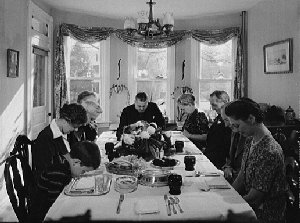 Some time ago, I wrote a simple grace for use at the Thanksgiving Day table. My aim was to stress the importance of the holiday and the people participating in our lives. It's not very elaborate but it stresses the need to remember these precious moments. I hope you find it useful:
Some time ago, I wrote a simple grace for use at the Thanksgiving Day table. My aim was to stress the importance of the holiday and the people participating in our lives. It's not very elaborate but it stresses the need to remember these precious moments. I hope you find it useful:
 Tim Bryce is a writer and the Managing Director of M&JB Investment Company (M&JB) of Palm Harbor, Florida and has over 30 years of experience in the management consulting field. He can be reached at timb001@phmainstreet.com
Tim Bryce is a writer and the Managing Director of M&JB Investment Company (M&JB) of Palm Harbor, Florida and has over 30 years of experience in the management consulting field. He can be reached at timb001@phmainstreet.com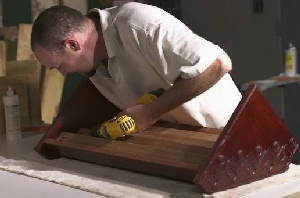 I recently gave a talk to the local
I recently gave a talk to the local 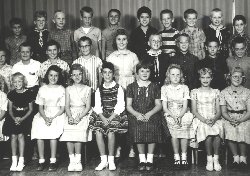 There have been a handful of epoch events over the years which have left indelible impressions on us. Momentous events where we clearly remember where we were on that date and what we were doing. For my grandparents, it was the end of World War I. As for my parents, it was Pearl Harbor. Other generations remember Neil Armstrong setting foot on the moon, the Challenger Disaster, and of course 9-11.
There have been a handful of epoch events over the years which have left indelible impressions on us. Momentous events where we clearly remember where we were on that date and what we were doing. For my grandparents, it was the end of World War I. As for my parents, it was Pearl Harbor. Other generations remember Neil Armstrong setting foot on the moon, the Challenger Disaster, and of course 9-11.
 I have been involved with several moves over the years. We moved our household seven times, primarily because my father was a pioneer in computing. As kids, we had to learn the nuances of different schools and had to make new friends with every stop. Some people may object to being bounced around so much, but in hindsight, I enjoyed meeting many people and experiencing local customs. I am still in touch with friends from these different places.
I have been involved with several moves over the years. We moved our household seven times, primarily because my father was a pioneer in computing. As kids, we had to learn the nuances of different schools and had to make new friends with every stop. Some people may object to being bounced around so much, but in hindsight, I enjoyed meeting many people and experiencing local customs. I am still in touch with friends from these different places.
 You would be hard pressed to find an institution that does not have a "pecking order" delineating authority through superior and subordinate relationships. The order ultimately dictates the authority we assume and our duties and responsibilities. Companies, both large and small, have some form of hierarchy with a leader at the top and the workers underneath. Nonprofit organizations also have such an order, be it a religious institution, fraternal order, homeowners association, sports club, a charity, or whatever. Any formal organization incorporated under the state requires certain positions, such as a president, vice president, etc., thereby suggesting a chain of command. Informal groups will also have a pecking order, including gangs and organized crime. Such orders are a natural part of life and we should all be cognizant of our position.
You would be hard pressed to find an institution that does not have a "pecking order" delineating authority through superior and subordinate relationships. The order ultimately dictates the authority we assume and our duties and responsibilities. Companies, both large and small, have some form of hierarchy with a leader at the top and the workers underneath. Nonprofit organizations also have such an order, be it a religious institution, fraternal order, homeowners association, sports club, a charity, or whatever. Any formal organization incorporated under the state requires certain positions, such as a president, vice president, etc., thereby suggesting a chain of command. Informal groups will also have a pecking order, including gangs and organized crime. Such orders are a natural part of life and we should all be cognizant of our position.
 Has technology truly improved the quality of life? It is hard to say as many companies do not take the time to measure the variables involved, such as economics. Such analysis is normally documented as a Cost/Benefit Analysis, complete with break even points and return on investment. Although we would like to believe technology enhances productivity and profits, there is little or no data to substantiate it.
Has technology truly improved the quality of life? It is hard to say as many companies do not take the time to measure the variables involved, such as economics. Such analysis is normally documented as a Cost/Benefit Analysis, complete with break even points and return on investment. Although we would like to believe technology enhances productivity and profits, there is little or no data to substantiate it.
 As most of us know, to get our message out to the public, there is nothing easier to use than social media. Services such as Twitter, Facebook, LinkedIn, Google+, Instagram, et al, have made it incredibly easy to disseminate text, graphics, videos, audio, or just about any other computer file. It is now the vehicle of choice to reach friends, family, customers, and news outlets. Whereas a 24 hour cycle was required to distribute news, now it is done around the clock and reaching a global audience.
As most of us know, to get our message out to the public, there is nothing easier to use than social media. Services such as Twitter, Facebook, LinkedIn, Google+, Instagram, et al, have made it incredibly easy to disseminate text, graphics, videos, audio, or just about any other computer file. It is now the vehicle of choice to reach friends, family, customers, and news outlets. Whereas a 24 hour cycle was required to distribute news, now it is done around the clock and reaching a global audience.
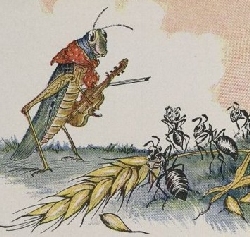 Last month, the Gallup organization produced a report entitled,
Last month, the Gallup organization produced a report entitled,  Now for a bit of nostalgia. I was recently up on a Philadelphia web site doing some research when I stumbled upon an old kiddie show I watched back in the 1950's. I couldn't have been more than three years old at the time, but memories of the show came flooding back to me. I happened to tell my wife about the show, including its plot and puppet characters, and she looked at me like I had lost my mind. Before I reveal the name of the show, which only someone from the Philadelphia/New Jersey/Delaware area will remember, I prepared a list of the children television shows from years ago and contemplated their impact on my generation.
Now for a bit of nostalgia. I was recently up on a Philadelphia web site doing some research when I stumbled upon an old kiddie show I watched back in the 1950's. I couldn't have been more than three years old at the time, but memories of the show came flooding back to me. I happened to tell my wife about the show, including its plot and puppet characters, and she looked at me like I had lost my mind. Before I reveal the name of the show, which only someone from the Philadelphia/New Jersey/Delaware area will remember, I prepared a list of the children television shows from years ago and contemplated their impact on my generation.
 The 2010 Affordable Care Act (aka "Obamacare") has been the object of our attention for the last three years. It remains controversial to this day as
The 2010 Affordable Care Act (aka "Obamacare") has been the object of our attention for the last three years. It remains controversial to this day as  Back in the early 1980's there was a big push for quality in the work place. The sudden interest came about after it was discovered the Japanese were overtaking the Americans in building superior products. Interestingly, the works of quality pioneers such as W. Edwards Deming and Joseph M. Juran, who enjoyed success in Japan, were rediscovered. Books couldn't be written fast enough on the subject, seminars overflowed with attendees, and Deming and Juran became overnight sensations in their home country which, for many years, ignored their contributions. The International Standards Organization (ISO) introduced the ISO 9000 Series of standards for quality which were quickly adopted by Europe and grudgingly by the United States. Although there was a general raising of consciousness in the 20th century, interest in quality began to wane in the 21st. So much so, you do not hear too much about it anymore and I fear quality is something we again take for granted.
Back in the early 1980's there was a big push for quality in the work place. The sudden interest came about after it was discovered the Japanese were overtaking the Americans in building superior products. Interestingly, the works of quality pioneers such as W. Edwards Deming and Joseph M. Juran, who enjoyed success in Japan, were rediscovered. Books couldn't be written fast enough on the subject, seminars overflowed with attendees, and Deming and Juran became overnight sensations in their home country which, for many years, ignored their contributions. The International Standards Organization (ISO) introduced the ISO 9000 Series of standards for quality which were quickly adopted by Europe and grudgingly by the United States. Although there was a general raising of consciousness in the 20th century, interest in quality began to wane in the 21st. So much so, you do not hear too much about it anymore and I fear quality is something we again take for granted.
 We've all run into people who talk incessantly, be it a relative, friend, neighbor or coworker. You say "Hello" and that's basically the last word you have in the conversation. I was sitting at a lunch counter recently and overheard two men talking; actually, it was just one guy dominating the conversation. He talked for over thirty minutes nonstop without taking a breath. From what I understood, it had something to do about his financial portfolio. I could tell by the inflection in his voice that he thought he was being rather brilliant and articulate, but I could also tell by his companion's eyes that he was growing weary of the diatribe. And I think that's part of the problem of these people I call "Chatty Cathies"; they simply have no regard for the other person in the conversation or whoever else might overhear them. It is this insensitivity that annoys us more than anything else.
We've all run into people who talk incessantly, be it a relative, friend, neighbor or coworker. You say "Hello" and that's basically the last word you have in the conversation. I was sitting at a lunch counter recently and overheard two men talking; actually, it was just one guy dominating the conversation. He talked for over thirty minutes nonstop without taking a breath. From what I understood, it had something to do about his financial portfolio. I could tell by the inflection in his voice that he thought he was being rather brilliant and articulate, but I could also tell by his companion's eyes that he was growing weary of the diatribe. And I think that's part of the problem of these people I call "Chatty Cathies"; they simply have no regard for the other person in the conversation or whoever else might overhear them. It is this insensitivity that annoys us more than anything else.